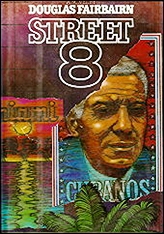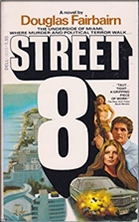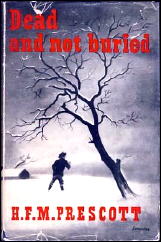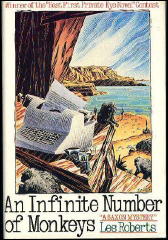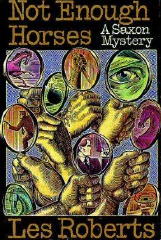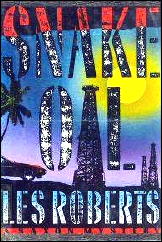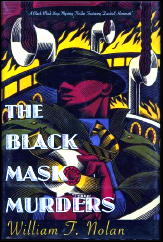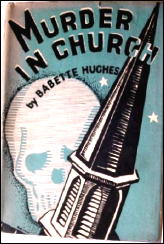FIRST YOU READ, THEN YOU WRITE
by Francis M. Nevins
One of the last books I read in 2009 was Losing Mum and Pup, satirical novelist Christopher Buckley’s memoir of his parents, who died within a year of each other.

His father of course was that titan among supercilious sesquipedalians, William F. Buckley Jr., who while appearing weekly on his Firing Line TV series for decades and writing thousands of columns for his magazine National Review (often turning out 700 words in five minutes) also penned a series of novels starring superspy Blackford Oakes, completing each book in about two weeks.
Christopher says nothing about his Pup’s contributions to mystery fiction but his memories of his Mum, who never wrote a word, reminded me irresistibly of another crime novelist. Mum, it seems, was a compulsive teller of tall tales. “I had heard [her] utter whoppers that would make Pinocchio look button-nosed,” says Christo.
She loved to tell visitors that when she was small the king and queen of England stayed at her parents’ house in Vancouver, or that she had recently served as alternate juror on a famous murder trial.
I never met any of the Buckleys but about 35 years ago I was invited to join the University of California’s Mystery Library project and thereby got to spend quality time with the project’s instigator: John Ball, author of In the Heat of the Night (1965) and creator of black detective Virgil Tibbs.
John too was a Munchausen of the first water. The instant any famous name was mentioned in his presence, from Gene Autry to the Dalai Lama, he would claim to know the person well and toss off an anecdote. Shostakovich? “Ah yes, he played the piano for us in this very room when he was last in the States.”
And what tales he’d spin about his hair-raising adventures around the world! Traveling in Asia, he was invited by the local police to help track down some notorious terrorist. On a secret mission behind the Iron Curtain he lured a Stasi agent who was shadowing him into a public urinal in East Berlin and killed him with one karate chop.

If you knew a bit about his life — that he’d been a licensed pilot and had traveled widely in Japan and had reviewed classical music for a Brooklyn newspaper and was a police reservist and a martial arts maven — you could almost believe these yarns, which he garnished with vivid detail.
Perhaps his biggest whopper, and one he should never have perpetrated because so many people saw through it, was that almost everything in the movie based on In the Heat of the Night had been taken from his novel.
Of course, what made that film so successful was the conflict between Sidney Poitier as Tibbs and the racist cop played by Rod Steiger. Go try to find a smidgen of that conflict in John’s novel.
John worshiped every badge he saw. In his world racist cops are like dry water, categorically impossible. Even on the plot level director Norman Jewison and screenwriter Stirling Silliphant junked much of the book, including everything about the murder victim trying to make that sleepy Southern town a Mecca for classical music.
But even when we saw through John’s tall tales it was tremendous fun to watch him spin them. He was the kind of personality that made Casper Gutman say to Sam Spade: “By Gad, sir, you’re a character, that you are!” I thank Christopher Buckley for rekindling my memories of him.
Another of the last books I read in 2009 came out earlier but so stealthily that few people know it exists. Rick Cypert’s The Virtue of Suspense: The Life and Works of Charlotte Armstrong (Susquehanna University Press, 2008) is just what its title indicates, the first full-length study of the woman who deserves to be called the female Cornell Woolrich if anyone does.

At their finest, both could generate suspense like nobody else in the business, often with the aid of eye-popping coincidences and improbabilities that readers were usually too rapt to register. There were, of course, huge differences between the two. Armstrong (1905-1969) led a conventional life enriched by a husband (who was murdered a few years after her own death), children and many friends, while that loner’s loner Woolrich hardly had a life at all.
Armstrong carefully revised and reworked her novels and stories while Woolrich wrote at white heat, creating an intensity beyond Armstrong’s but also committing countless linguistic howlers and blunders.
Mysteryphiles may safely skip most of Cypert’s introductory chapter, which explores various psychological and aesthetic theories, but they won’t want to miss anything else. Another book on Armstrong is unlikely but, thanks to the excellence of this one, hardly necessary.
Cypert had the full co-operation of Armstrong’s children and access to her extensive correspondence — with other writers, editors like Fred Dannay, and critics like Anthony Boucher, who adored her work and had much to do with her success. He is presently editing a collection of her short stories, which will be published by Crippen & Landru in due course.
Cypert is a professor at Nebraska Wesleyan University, the alma mater of another famous female mystery writer. I suspect it’s not a Woolrich-Armstrong coincidence that he’s also written a book on Mignon G. Eberhart and co-edited a collection of her short stories.

I’ve read little of Eberhart and only met her once, but on that occasion I just may have saved her from serious injury. One miserable winter afternoon in the Reagan era I was in New York and found myself with Eberhart, who was in her eighties at the time and quite tiny and frail, and Gloria Amoury, MWA’s executive secretary.
All three of us needed to get from Point A to Point B and decided to share a cab. I was immediately behind Eberhart as she entered and one of her feet went out from under her on a patch of ice.
Somehow my instincts kicked in. I formed my hands into a sort of seat and caught her bottom in it before she could fall.
Could I be responsible for her having lived to the ripe old age of 97?
